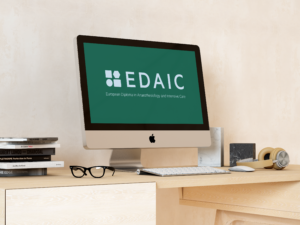Newsletter 2022
Newsletter November 2022: Paediatric Clinical Trial Networks: APRICOT and NECTARINE - Two successful stories
Nicola Disma, Walid Habre, Thomas Riva
ESAIC sponsors large collaborative projects under the umbrella of the Clinical Trial Network (CTN) since 2010. CTNs were initiated by the late Prof. Andreas Hoeft and continued annually through open calls. Since the first CTN call was launched, the aim of CTN was to explore the incidence of rare and severe events in the field of anaesthesia and intensive care needing large samples of patients to answer the research question. As such, CTN offers the opportunity to accomplish large data collection in a relatively short period of time while reinforcing large collaborative networks among different research groups across Europe.
Two paediatric CTNs have been funded by ESAIC: APRICOT and NECTARINE. The first was a prospective cohort study exploring the incidence and risk factors of severe critical events in children undergoing anaesthesia. Similarly, Nectarine explored critical events, morbidity and mortality in neonates and infants undergoing anaesthesia.
Both CTNs were successfully concluded, with an unprecedented number of patients entered into the database. In particular, the APRICOT database had over 31,000 patients included, while NECTARINE included over 6,500 procedures in 5,500 patients. APRICOT main publication went out in The Lancet Respiratory Medicine journal (Lancet Respir Med. 2017 May;5(5):412-425.), while the main outcome of Nectarine was divided into two main publications: the first reporting incidence of critical events (Br J Anaesth. 2021 Jun;126(6):1157-1172.) and the second addressed the incidence of difficult airway management (Br J Anaesth. 2021 Jun;126(6):1173-1181).
Nectarine represents a unique dataset since none of the current publications focused on such a specific paediatric population: neonates and infants. The first analysis of the database highlighted the fragility of neonates undergoing anaesthesia. They are frequently affected by multiple co-morbidities, and their risks of morbidity and mortality remain high despite the improvement of care over the last decade. Neonates deserve highly specialised centres with experienced and qualified staff. In addition to the highly relevant output included in the main publications, ancillary analyses were performed with the aim of exploring specific outcomes. As a result, transfusion and blood management, and anaesthesia in children with hypertrophic pyloric stenosis were subsequently published (Br J Anaesth. 2022 Sep; Eur J Anaesthesiol. 2022 Mar 1;39(3):252-260.). Finally, national databases were made available to national coordinators to analyse their data on a national basis and provide evidence for quality improvement care. The UK, the Netherlands, Italy, and other countries analysed and published their data sets in this regard.
What are the reasons behind a CTN successful journey?
First of all, paediatric anaesthesia literature is sparse and mainly represented by small-sized studies. Children represent a minority of our patients, and they undergo anaesthesia for many reasons. Luckily, adverse events are rare, but when they happen, they might have severe consequences if not recognised in time and properly treated. Moreover, a severe critical event occurring early in life might have long-term sequelae. For this reason, children deserve the best attainable quality of care. Paediatric CTNs represented unique opportunities to collect data on an adequate size to observe the incidence of these rare events.
Secondly, the strength of the European paediatric anaesthesia community is a key factor. When called to collaborate, paediatric anaesthesiologists always answer very positively. There is a clear understanding that there is an increasing complexity of care, and it is important that a paediatric network is in place and works smoothly. In fact, a rapid exchange of information and the opportunity to share clinical experiences is fundamental. After two successful CTNs, we can conclude paediatric anaesthesiologists across Europe find in the Research Network the place where an open debate occurs and new knowledge can be easily exchanged.
What happens when a paediatric CTN is over?
Both these paediatric CTNs always had a long shadow, their effects continuing to be seen. The ultimate aim of both trials was to improve and spread paediatric anaesthesia knowledge. Several European courses were successfully organised during Euroanaesthesia 2022 in Milan, where experts discussed clinical cases and applied standards of care based on recent findings. However, as knowledge and technology rapidly evolve, further collaboration is needed.
As a consequence of these two successful CTNs and the development of a strong network in Europe, a “Paediatric Anaesthesia Research Network” group came to light and the challenge now is the recognition of this unique group by the mother scientific society: ESAIC. This group is responsible for initiating additional trials that are needed to fill in the gap in paediatric anaesthesia. Thus, two new collaborative projects are about to be launched, and the paediatric anaesthesia community will soon be called to collaborate and participate: CRICKET (CRItiCal events in anaesthetised Kids undergoing Elective or emergency Tracheal intubation) and EuroFAST. However, our community remains an open place where ideas can be exchanged. For this reason, every good proposal for future projects is welcome, and the network is in place to serve everyone in Europe who wants to establish new projects. We trust the future is dense with new opportunities, and it is reassuring for the paediatric anaesthesia research network to continue to innovate and act under the ESAIC umbrella!
[maxbutton id=”1″ url=”https://www.esaic.org/newsletter/” text=”Read the Newsletter” ]










